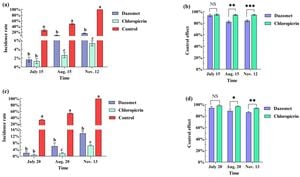Auren Energia (AURE3), once hailed as the bright new star of the Brazilian financial markets, now faces scrutiny and skepticism following its recent merger with AES Brasil. Since its entry onto the Brazilian stock exchange on March 28, 2022, Auren captured the attention of investors, especially as it distributed R$ 3 per share as dividends, securing its position among the top five dividend payers on B3, the Brazilian stock exchange, with an enticing dividend yield of 20.37% for 2023.
Fast forward to 2024, and Auren's story has taken a stark turn. The merger intended to create the third-largest electricity generator in Brazil may have backfired amid rising interest rates. Analysts at E-Investidor note, “Auren's merger with AES Brasil created the third largest generator, but the timing with rising interest rates is troublesome.” With rates projected to soar to around 15%, the previously attractive dividends Auren offered are now at risk.
Investor confidence has shaken as Auren's stock prices have plummeted, declining by over 31% since its IPO—a stark comparison to the Ibovespa's gains of 7.46% during the same period. This downturn is particularly concerning as Auren is expected to exhibit little to no recovery before 2028, meaning shareholders could be left waiting long for dividends. Experts anticipate the company's dividend yield could be as low as 1% to 3.7% by 2025, according to projections from multiple analysts.
The company announced major changes as it gears up to manage increased financial pressures resulting from its newly acquired debts. A direct consequence of the merger is the anticipated expansion of Auren’s debt load, which analysts predict will jump to between 4.9 and 5.5 times EBITDA. Bruno Oliveira, an analyst highlighting the situation, remarked, “The debt level is expected to rise significantly, increasing the risks associated with the investment.” This elevated leverage poses potential risks to profitability and future dividends.
Despite the challenges, the management of Auren has expressed optimism. The company’s Vice President of Finance and Investor Relations, Mateus Ferreira, indicated the company would manage to deleverage its balance sheet more rapidly than anticipated. Ferreira noted, “We expect our debt to significantly decrease within two years post-merger.” The optimism surrounding operational efficiencies and cash flow generation may provide some hope for investors.
For those who are considering investing, this situation creates both opportunities and pitfalls. Analyst assessments vary, with some believing this could present a buying opportunity for long-term investors, as the price drop may facilitate future gains. Yet, many warn against jumping on the Auren bandwagon. Vitor Sousa of Genial Investimentos stated, “I would not recommend investing now due to high opportunity costs, especially for those who seek reliable dividends.” This sentiment is echoed by experts who suggest there are more stable companies within the sector delivering healthier dividends.
The impact of payment cuts on Auren’s dividend policy cannot be understated either. Should the company constrain dividend payouts to the legal minimum of 25% of its net income, investors will see significantly reduced income until at least late 2028, disrupting previously established patterns of distributions. The question of how Auren will handle its capital allocation also looms large, especially with plans for investments alongside the merger adjustments, which could influence future dividend capabilities.
With the backdrop of rising investor concern, it is pertinent to reflect on the reasons behind Auren's current predicament. The driving factor lies within the quick ascent of interest rates and the heavy debt incurred through the merger. Selling off the cultural legacy of reliable dividends painted Auren as the energy prince, once seen as the beacon of stability, now ironically likened to the tale of the “prince who turned to frog.”
Nevertheless, there remains some anticipation within the investment community for the company's upcoming financial reports and potential turnaround strategies. It’s highly emphasized across various investment reports—this merger marks not only the evolution of Auren but illuminates vast uncertainties concerning its future financial viability. The long-term outcome remains to be seen, but Auren’s present state is indicative of broader fluctuations within the energy market and investment climate at large.
Current market analysts continue to study Auren’s fiscal strategies closely, hoping to grasp how the capital structure may evolve and how management plans to maintain its operational integrity. Yet, for the moment, Auren’s reputation has undoubtedly felt more pressure as it navigates through turbulent economic waters, prompting all stakeholders to tread carefully with future investment decisions.



